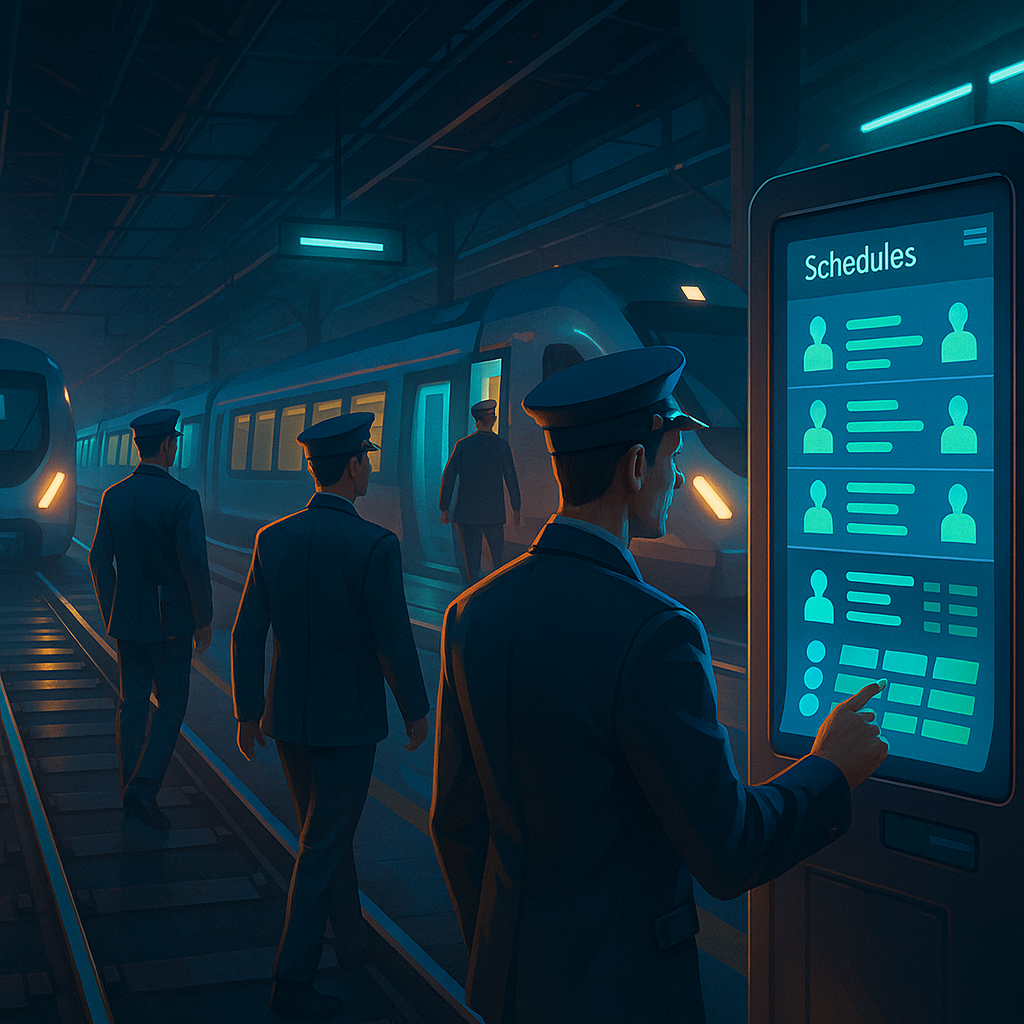The Impact of Effective Conductor Rostering on Fleet Management

Effective fleet management is more than having cars serviced and routes planned. It is a coordinated operation through many different elements, one of which is manpower control. One of the most important but normally overlooked items is conductor rostering, the planning of conductors acceptably and optimally. In operations with large volumes of passengers, such as school transport businesses, public transit buses, and corporate shuttles, effective conductor rostering can be a game-changer.
With this blog, we discuss the different benefits of implementing conductor rostering as part of a modern fleet management policy and how it contributes to optimised operations, improved safety, and increased cost-effectiveness.
1. Improved Operating Efficiency
One of the most self-evident and physical benefits of conductor rostering is greater operational efficiency. Pre-emptive scheduling of conductors to trips allows the right people at the right place and the right time. This lessens the requirement for last-minute re-assignment or last-minute allocation due to absenteeism or scheduling issues.
Through a visible and sequential rostering, fleet managers and conductors enjoy full visibility of their respective rosters. This enhances vehicle and team member coordination, reduces dwell time, and maximises trip reliability. On high-frequency operations, minute delays compound into enormous disruption. Conductor rostering avoids such problems by ensuring smooth manpower allocation.
2. Minimised Human Error and Miscommunication
Manual scheduling through paper records or spreadsheets is prone to errors. It tends to result in miscommunication whereby conductors may report to the incorrect depot, fail shifts entirely, or remain ignorant of last-minute routing changes assigned to them. This miscommunication may result in service delays, angry passengers, and heightened stress levels among the management team.
Software conductor rostering systems address this through delivering centralised, real-time communication. All the conductors are given explicit instructions, such as shift commencement times, vehicle allocations, pick-up points, and route information. Automated reminders and notifications ensure that everyone is up-to-date on developments, significantly reducing the likelihood of human error.
3. Enhanced Safety and Compliance with Regulation
Safety cannot be compromised in any transportation service, especially those involving children or groups. Overworked or underworked conductors who are fatigued can compromise safety precautions and become hazardous. Roster systems for conductors help monitor duty time and offer break times between duties.
This not only keeps operations consistent with labor legislation but also promotes a safety-first culture. Proper breaks and enough leave time avoid fatigue and heighten alertness in conductors. Reports generated by computerised rostering systems also make audits easier and allow the organisation to maintain compliance with the requirements of the law in terms of working hours and deployment of personnel.
4. Optimal Utilisation of Staff
Rostering allows the fleet managers to make use of available conductors to their maximum capacity without overloading them. Having a perspective of each conductor's workload, skills, and availability, assignments can be maximised to meet route needs.
For example, conductors who have expertise in operating high-density routes or operating with children with special needs can be intentionally assigned to those particular trips. Not only does this enhance service quality, but it also provides equitable distribution of workload. It does away with both the issue of some of the conductors being underutilised and others being overworked.
5. Improved Absence and Leave Management
Unplanned absences or spontaneous leave requests are unavoidable in any business. But with a conductor rostering system, fleet managers would be able to predict such disruptions and better manage them. The system could inform pending leaves, recommend replacements, and then adjust schedules accordingly.
Advanced rostering software even allows real-time changes to be shared and made across the team. Standby backup conductors can be booked for priority routes, ensuring uninterrupted service without the necessity of emergency overtime or standby bookings.
6. Greater Employee Satisfaction and Retention
Conductor satisfaction typically relies on fairness and work timetable predictability. If conductors are notified in advance of their work timetables, it makes effective personal time planning possible and promotes work-life balance. Open rostering avoids favouritism and promotes employee trust.
Additionally, when conductors notice that their workloads are evenly distributed and their preferences or limitations are taken into consideration, it leads to more job satisfaction. Satisfactorily employed individuals are often more likely to stick with an organisation, reducing recruitment and training costs associated with high turnover.
7. Access to Data-Driven Insights
Most digital rostering software has integrated analytics and reporting capabilities. These are useful in delivering insights into employee attendance, overtime trends, shift choices, and performance metrics. Fleet managers utilise these insights to make informed decisions regarding resource planning, training requirements, and even recruitment.
By recognising trends like regular absenteeism, repeated scheduling conflicts, or conductors who repeatedly exceed expectations, management can reward stars or solve problems before they start. It transforms rostering from simply an operational function but a source of strategy.
8. Cost Savings
Each minute a trip is delayed or a trip is mismanaged can have a cost. It may be overtime pay, higher fuel usage through re-routing, or customers turned off by the service to the point of service attrition, but inefficiencies accumulate. A strong conductor rostering system keeps these losses down by having each trip completed efficiently and smoothly.
Automated scheduling also minimises dependence upon human supervision, releasing managerial resources to support more advanced planning and decision-making. Over the long term, together with the reduced absenteeism and diminished interruption of service, improved use of resources results in considerable cost savings.
Conclusion
Conductor rostering may be a simple administrative function, but its value to transport fleets is enormous. From optimising day-to-day operations and meeting government regulations to improving safety, lowering operating costs, and having happier employees, it is at the heart of transportation systems today.
In today's fast, technology-driven world, manual rostering practices cannot keep up. Arena Softwares intelligent conductor rostering solutions not only simplify and automate scheduling but also change the whole effectiveness and reliability of your fleet. Here, Arena Softwares makes your fleet operations more agile, data-driven, and future-ready. Contact Arena Softwares today.
